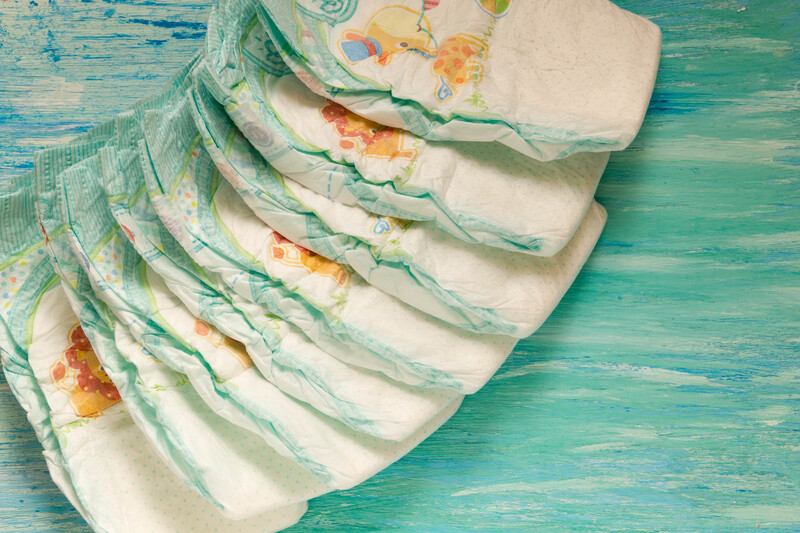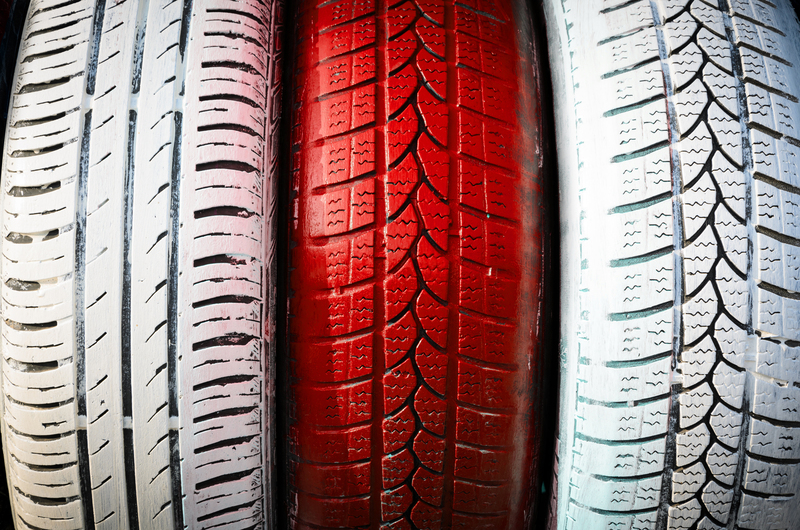Avoiding Common PPE Waste Disposal Mistakes
The global use of Personal Protective Equipment (PPE) has skyrocketed in recent years, especially following the COVID-19 pandemic. With increasing PPE usage comes an urgent need for proper PPE waste disposal to protect human health, environmental safety, and ensure regulatory compliance. However, improper disposal of PPE continues to be a widespread issue. Whether you're part of a healthcare facility, a manufacturing plant, or running a small business, knowing how to avoid common PPE waste disposal mistakes benefits not only your organization but society as a whole.
Understanding PPE Waste and Its Environmental Impact
PPE waste includes single-use masks, gloves, gowns, face shields, respirators, shoe covers, and more. These items are typically made from materials like polypropylene, nitrile, latex, and other plastics, many of which are not biodegradable. If not properly managed, this hazardous waste can end up in landfills, waterways, or incinerators, contributing to pollution, harming wildlife, and potentially spreading pathogens.
- PPE waste can take hundreds of years to decompose.
- Improper disposal threatens marine and terrestrial ecosystems.
- Discarded PPE can become a vector for disease transmission.
- Incorrect waste management can lead to regulatory penalties.
This highlights the importance of PPE waste management and the need for awareness about common errors made during the disposal process.

Common PPE Waste Disposal Mistakes
Despite best intentions, organizations and individuals often make errors when disposing of personal protective equipment. Below are the most prevalent PPE waste disposal mistakes that should be avoided to maintain safety and sustainability.
1. Mixing PPE Waste with General Waste
One of the most frequent mistakes is disposing of used masks, gloves, or gowns in regular trash bins. This leads to:
- Increased risk of cross-contamination in landfills
- Lack of traceability or control over hazardous materials
- Missed opportunities for safe containment or sterilization
Best Practice: Always separate PPE waste from general or recyclable waste streams. Use clearly labeled bins specifically intended for PPE disposal.
2. Failing to Use Appropriate PPE Waste Disposal Bins
Improvising with unmarked containers or open baskets heightens the risk of exposure for janitorial staff and waste handlers.
Proper PPE disposal stations must include:
- Leak-proof, lidded bins with foot pedals to avoid contact
- Biohazard or PPE-specific labels (in red, yellow, or other regulated colors)
- Clear instructions posted above the bin for correct use
*Neglecting designated containers can lead to accidental infections or workplace safety violations.*
3. Ignoring Protocols for Contaminated PPE
Contaminated PPE (exposed to chemicals, pathogens, blood, etc.) requires special attention. A common mistake is treating it as ordinary PPE waste or even general waste, when it should be treated as hazardous or biomedical waste.
- Contaminated items may harbor dangerous bacteria or toxic chemicals.
- Misclassification breaches government safety regulations.
4. Overfilling PPE Waste Containers
It's tempting to fill disposal bins to maximum capacity, but this increases the risk of spillage and contact during handling.
- Overflowing bins expose staff to infectious material
- They discourage proper handling further down the disposal chain
5. Neglecting PPE Waste Segregation
Different types of PPE, or PPE contaminated with different materials, often need to be disposed of separately. Failure to segregate PPE waste correctly can result in improper treatment and regulatory non-compliance.
- Single-use masks vs. gloves contaminated with chemicals require different disposal methods.
- Mixing wastes leads to increased treatment costs and environmental harm.
6. Lack of Staff Training and Awareness
Many mistakes occur because employees or users are unaware of the appropriate disposal policies for PPE. Inadequate training leads to:
- Improper use of disposal containers
- Accidental contact with hazardous material
- Non-compliance during emergencies
*Invest in regular training programs, visible signage, and quick-reference guides to empower everyone involved in handling PPE waste.*
7. Disposing of Reusable PPE Improperly
Not all personal protective equipment is single-use. Items like reusable masks, face shields, or laboratory coats should be disinfected according to manufacturer guidelines, not just tossed away.
- Disposing of reusable PPE creates unnecessary waste and expense
- Incorrect cleaning can put users at risk
8. Not Following Local and National Regulations
One costly error is failing to comply with legal requirements for hazardous or PPE waste. Regulations vary by region and industry but are designed to ensure safe handling, storage, transportation, and final disposal.
- Fines and legal action for non-compliance
- Potential workplace safety audits
- Harm to public health and reputation
9. Inadequate Record-Keeping and Tracking
Many organizations neglect to log their PPE waste disposal practices. Without records:
- Audits become more difficult
- Lapses in compliance may go unnoticed
- There's no data to guide process improvements
Best Practices for Responsible PPE Waste Disposal
To avoid these common PPE waste disposal mistakes, organizations should establish robust guidelines and foster a safety culture. Implement these best practices in your facility:
1. Establish Clear PPE Waste Management Policies
- Have written procedures for segregating, containing, treating, and documenting PPE waste
- Ensure organization-wide awareness through signage and training
2. Use Properly-Labeled Bins and Containers
- Introduce color-coded, sealed, and pedal-operated disposal units
- Post clear, multilingual instructions at all PPE disposal points
3. Train Employees Regularly
- Hold annual or biannual safety training sessions on PPE waste handling
- Conduct spot checks and refresher courses
4. Regularly Review and Update Practices
- Stay ahead of changes in local regulations or best-practice guidance
- Solicit feedback from frontline staff for process improvement
5. Engage with Certified Waste Disposal Partners
- Choose reputable, compliance-oriented waste management contractors
- Request documentation and proof of safe, eco-friendly disposal
6. Encourage Sustainable Alternatives
- Adopt biodegradable or recyclable PPE wherever safe and feasible
- Implement take-back or recycling programs for low-risk PPE
Exploring Sustainable Solutions for PPE Waste
As PPE waste becomes a mounting environmental challenge, exploring more sustainable solutions is crucial. Some innovations include:
- Recycling Programs: Some facilities now recycle masks and face shields by breaking them down into raw materials for industrial reuse.
- Composting Biodegradable PPE: Items made from plant-based or compostable materials can be processed with other organic waste.
- Incineration with Energy Recovery: Incinerators with energy capture systems can reduce the environmental impact.
Organizations should work with manufacturers and waste management companies to pilot innovative PPE waste reduction projects.
Legal and Regulatory Considerations
Global and local authorities have put in place strict guidelines for hazardous medical, chemical, and PPE waste management. Key legal pointers include:
- OSHA (Occupational Safety and Health Administration) Regulations: Outlines requirements for handling, containment, and disposal of Personal Protective Equipment in the workplace.
- EPA (Environmental Protection Agency): Rules on treating infectious and chemical waste, including PPE, to prevent public health risks.
- Local Health Departments: Many have their own additional guidelines for PPE waste sorting, storing, and transport.
Non-compliance can bring hefty fines and long-term restrictions. Organizations must keep up-to-date with these regulations and invest in training staff to avoid PPE disposal mistakes.

The Future of PPE Waste Management
As the world adopts stronger environmental practices, the pressure is on manufacturers to produce more sustainable PPE, and on users to dispose of it responsibly. The future will bring:
- Widespread adoption of circular economy principles in PPE production and disposal
- Greater investment in reusable PPE technology
- Bans or taxes on single-use plastics in some regions
- Automation and AI-enabled waste sorting systems for PPE
For now, the responsibility lies with every organization and individual to handle PPE waste with diligence, following best practices and legal obligations.
Conclusion
By avoiding common PPE waste disposal mistakes, we can better protect our environment, our communities, and our staff. The impact of careless PPE waste management is far-reaching--but with strong policies, robust training, and an ethic of compliance, risks can be minimized.
Remember: PPE saves lives only if it's managed properly throughout its entire lifecycle--including disposal. Make it a core component of your safety and sustainability protocols today.
Key Takeaways:
- Separate all PPE waste from general and recyclable waste streams.
- Only use approved PPE waste bins--never improvise with household bins.
- Segregate types of PPE and contamination levels for proper handling.
- Train and re-train staff for compliance and safety.
- Partner with responsible waste disposal firms.
- Stay updated on legislation and best environmental practices.
*For further guidance, consult your workplace's safety manual, regulatory agencies, and certified waste management partners to enhance your PPE waste management strategy.*